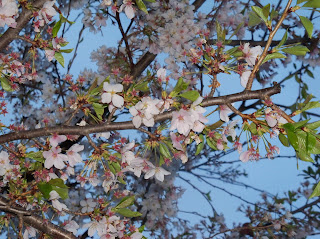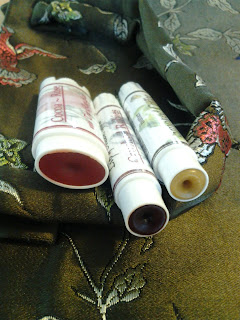With Dr. Isidro Sia, Director- UP Institute of Herbal Medicine
I went to this lecture of Dr. Isidro Sia on Filipino Herbal Medicine and Traditional Healing Practices upon invitation of the Lopez Museum, a museum dedicated for Filipino medieval studies. The Lecturer, Dr. Sia is presently Director of the Institute of Herbal Medicine, National Institutes of Health in UP Manila and a Professor of the Department of Pharmacology and Toxicology, College of Medicine, in the same university.
Dr. Sia earned his Bachelor and Medical degree from the University of the Philippines. He received his Doctorate in Philosophy at Kobe University School of Medicine in Japan.

He has this sense of Nationalism and pride for our heritage because he knows what he is talking about, despite his education and training abroad, He gave the lecture in Tagalog, our national language and never apologize for using it. He is familiar with different dialects, culture and ancient practices of our folks in different regions of the country, which some of them are unfamiliar with me. Different regions have their own unique folkloric healing practices and traditions and never underestimate them, even our own NPA (New People's Army-a militant group in the mountains) knows herbal medicine as they always carry and plant Dabu-Dabu (a plant from Samar) for Malaria and other diseases. Dr. Sia knows all kinds of herbs, what is indigenous and what are those came from foreign land brought about by our foreign conquerors like Spain, USA and Japan. The Institute had done comprehensive studies of different tribal or cultural healing arts and documented the tradition like those mentioned below and noted that some tribal healing practices are already copyrighted by tribal groups, like the "Babaylan" so using the practices need a permission from the elders or the tribal groups.

Our traditional healers from different regions
What catched my attention is that he mentioned that herbal medicine use should also be regulated or use properly with precautions, not because it is herbal you can use it indiscriminately. According to him poison and medicine has a very thin line or "di nagkakalayo", some medicine started as poison and found a medicinal use. "Ang Kalikasan ay may pagkain, gamot at lason" (in Nature there is food, medicine and poison), proof is that there are herbs that has abortive properties (induce abortion), so herbal medicine should focus on science-culture-economics-safety, that is the crux of his lecture, to give emphasis on the safety, effectivity and cost-effectiveness of using herbal products or medicines. He said, once the product is "romanticized" it becomes a business and loses it purpose and he warned us to be careful on using and spending on products with bogus claims.
Some of the herbs with documented scientific studies from DOH
"Kalidad at Kantidad" (Quality and Quantity)
Dr. Sia said that all plants, herbs, vegetables, fruits has anti-oxidants in them, but the quality of this ani-oxidants can be diminished as it is stored, processed or consumed. Example, he mentioned about the Malunggay (Moringa) capsules and Malunggay flavored bread and noodles. It is best that we eat these vegetables as fresh as we can, and instead of taking those capsules and Malunggay flavored items, why not add fresh Malunggay into cooking foods instead, that way we get sufficient quality and quantity of nutrition derived from the vegetable compared to those flavored food item which only put small quantity of the vegetable, makes a lot of sense.
It is also very interesting that he discussed the current and previous trends in herbal products that is very popular in the market and internet, the latest trend which is Guyabano, a very popular these day as a cancer supplement. Why they failed the claims and the test of time? are they really effective? since there is no enough documented studies (clinical and scientific) it could not make such claim.
Some of the herbs mentioned below, I really admired and swear to the effectiveness, though as said earlier, some manufacturer and producer of these supplements' processing methods is questionable, in choosing for supplements I really want to know the source, how they processed and package this products, in some way these manufacturers might failed in some key areas, and their claims are mostly based on testimonials and not supported by clinical studies.
Why some studies failed? To me it could be because the product itself is already oxidized during processing, not necessarily they are not effective, so I might still be using Guyabano or VCO or Noni, Honey, Apple Cider Vinegar (ACV) as fresh as possible instead. I am a fan of Apple Cider Vinegar, Narra, Noni and Honey, In choosing ACV I choose a good brand which is committed to organic resources, raw and unfiltered processing, same goes with honey it should be raw, wild, unfiltered and not UHT processed to maintain and preserved the effectiveness.
While these herbs and medicine focuses on the physical healing during studies or clinical trials, the subjects might have other issues such such as mental, psycho-emotional or spiritual issues that could lead to the failure of the effectiveness of a drugs or supplements, this was not addressed during trials but just my own thoughts and opinion. The good doctor do not discourage using them but to be aware and be educated as much as possible in using them, research and use them as fresh as possible not to rely on so much processed herbs and claims, that is his only point.
 |
Pangako na Napako (Promises that can't be kept),
According to Dr. Sia these failed to deliver results, though I might disagree on some of them. |
Some Herbs/Plants that failed to satisfy the claims and also failed scientific/ clinical studies, note the trend in chronological order
Lecture Summary:
Sharing below notes on the lecture of Dr. Sia, who has done research and oversees research on traditional healing practices of Philippine ethnic groups. As a researcher, he keeps an open mind on traditional healing methods and practitioners (e.g., hilot, albularyo, etc.).
1. Most important: Not everything that is natural is safe. e.g., Ginkgo is natural but is dangerous for bleeders because it is a blood thinner.
2. If you receive a leaflet that lists/claims 30+ diseases are cured or helped prevented by something, wait for more studies. It is most likely a passing fad [NOTE: NO APPROVED THERAPEUTIC CLAIMS]. These include Comfrey, Kargasok Tea, Apple Cider, Bee Pollen, Honey, Wheat Grass, Pito Pito, Mahogany, Narra, Noni, VCO, Mangosteen and Guyabano (the latter 3 are the LATEST, and therefore require further studies).
3. The following are approved by the Department of Health: lagundi (for cough), sambong (diuretic, for kidney health), yerba buena (for pain), tsaang gubat (for stomach ache), niyog niyogan seed (anthelmintic/dewormer), akapulko (anti-fungal--for an-an/buni/alipunga/hadhad), bayabas (for wounds), ampalaya (brings down blood sugar), pansit-pansitan (brings down uric acid), bawang (brings down bad cholesterol).
4. Food-medicine-poison belong in one spectrum. They interface. Some poisons are researched for their medical application. Hippocrates said: Let food be thy medicine and medicine be thy food. Food is the first medicine (nourishes the body, keeps it healthy).
5. Go back to basics. To be healthy: exercise 30 minutes a day, eat 2-4 servings of fruit, 3-5 servings of vegetables, 1-2 servings of meat, moderate salt and sugar, sleep 5-8 hours. Do not look for quick fixes.
6. It is better to eat healthy food than to rely on supplements. e.g., malunggay is better in your tinola than in noodles/pan de sal or in capsules (powder form). Take supplements (multivitamins) only when needed (sick, cannot eat properly, under treatment).
7. Do not romanticize traditional medicine. It has a role, but it is also a business. Before patronizing, ensure that it is safe and cheap. If something is used as food, then it may be safe but not necessarily effective as a medicine.
8. When researching the internet, do not go to websites with plenty of ads. Stick to those of universities or government agencies.
9. All plant materials contain anti-oxidants. So if all that a product claims is it has anti-oxidants and it came from a plant, it may be telling the truth but it does not mean it has special healing properties compared to other plant materials.
The lecture ends well with very interesting questions from participants who are very conscious of their health and it was both educational and enlightening.
It cross my mind that the Philippines is so blessed for being rich in culture and herbal medicines both indigenous and endogenous , if we Filipinos know how to plant or grow our own food, there will be no hunger, malnutrition and proliferation of diseases and we can all be healthy.






























